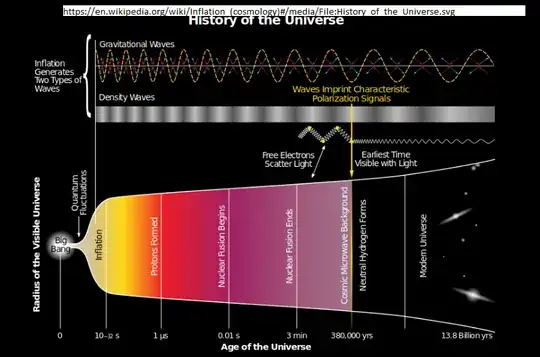We've all heard mass tells space how to curve and curved space tells matter how to move. But where does the energy to curve space come from? Likewise where does the energy that curved space uses to push planets around come from? I mean if I tell my son to clean his room, and he does, then I did not provide him the energy to do so.
5 Answers
Mass is the same as energy by $E = mc^2$ So the energy that curves space-time is the mass that curves space-time. Then you could ask why does mass curve space? As far as I know that is equivalent to asking where do Einstein's field equations come from. For that one needs a complete and consistent theory quantum gravity which has Einstein's equation in the low energy limit. No one has that.
"We've all heard mass tells space how to curve and curved space tells matter how to move." This poetic but be a bit misleading. Einstein's equations simply describe in detail how space-time changes as a result of changes in matter. There isn't some process or mechanism happening between matter and space-time i.e when space-time changes there is a process that occurs that then can be used to describe what matter will then do.
Lastly, you are using gravitational energy in the newtonian way of looking at gravity. The gravitational potential which ultimately gives gravitational energy in newton's theory is buried in the metric.
- 1,592
- 9
- 12
The theory of General Relativity works with the energy momentum tensor and one has to work with the mathematics of it in order to really understand what is happening, not handwaving. It is a fact that all cosmological and astrological data follow the general relativity equations, as one can see in this link The cosmological model accepted now is the Big Bang model, based on general realtivity and its constants adjusted with observational values. In this model all the energy of the universe, the one the energy momentum tensor describes, came at the Big Bang singularity:
The expanding universe utilizes this original energy . (Special relativity is part of General relativity, and thus the equivalence of mass with energy is accounted for). As the Big Bang model is quite successful , the answer is : the energy for everything comes from the original singularity. At the planetary and galactic level it is described well with Newtonian mechanics. At the atomic and nuclear the laws of quantum mechanics and special relativity are adequate to describe energy transformations.
- 236,935
If we pick the (most common or most useful) example of the Schwarzchild solution, it is simply the unique geometry that solves the Einstein's equations that is both static and spherically symmetric . It is solved in vacuum (which means that the energy density in the part of spacetime we are solving for is zero, while there may be a mass at the origin). This is similar to solving for the electromagnetic field, where you solve Maxwell's equations in vacuum to get the field due to a point charge. The charge itself is not losing any energy by the generation of the electric field. It is a description of interactions and not something that the charge expends energy in creating.
To answer the second part of the question, objects that are not being acted on by an external force (i.e., objects in free fall), follow geodesics: In simpler terms, if I set a ball rolling on a frictionless surface with constant velocity, it will follow a path where governed by the equation $\vec{F}=0$, which would be a straight line. It is the same concept in general relativity, except that the paths are not necessarily 'straight lines', because of the curvature of spacetime itself. (If I set a ball rolling on the earth, it will not shoot off at a tangent to the surface, but roll on the surface). It is important to note that the geodesics are locally straight. In other words, if I look at a small patch, spacetime looks flat, and bodies move along a continuous path. In other words, 'straightness' in general relativity need not correspond to what we intuitively think of as straight in non-relativistic contexts. In the case of orbiting bodies, the paths they follow $\textit{are}$ the paths that are locally straight in their frame of reference.
- 86
The energy is already there. It just converts from the temporal energy of spacetime to the kinetic energy that curved spacetime causes.
- 121
- 1
- 11
Asking where energy comes from is like asking about the origin of the universe. Did it all spontaneously pop into existence out of nothing, completely violating every existing law of nature, or has it always been there just waiting to expand out of the singularity when god himself gave the command. The answer is we don't know. We may never know. It's our curiosity about the world that leads to the advancement of science. If we knew the secrets of the universe, we would never learn, and that isn't a life I want to live. There are always things we don't know, and that's why the universe is so amazing. The best answer I can give you is that the energy has just been there since the dawn of creation. What's before that is a mystery.
- 121
- 1
- 11
